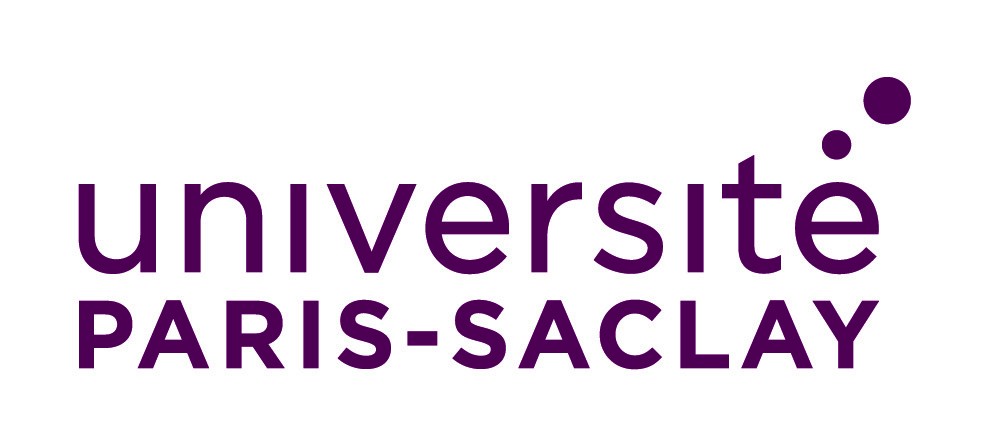Probabilistic Mapping of Dark Matter with Neural Score Matching
Benjamin Remy
With : Francois Lanusse, Niall Jeffrey, Jia Liu, J.-L. Starck, Ken Osato


slides at b-remy.github.io/talks/ML-IAP2021
Gravitational lensing

Galaxy shapes as estimators for gravitational shear
$$ e = \gamma + e_i \qquad \mbox{ with } \qquad e_i \sim \mathcal{N}(0, I)$$
- We are trying the measure the ellipticity $e$ of galaxies as an estimator for the gravitational shear $\gamma$
The Weak Lensing Mass-Mapping as an Inverse Problem
Shear $\gamma$
![]()

Convergence $\kappa$
![]()

$$\gamma_1 = \frac{1}{2} (\partial_1^2 - \partial_2^2) \ \Psi \quad;\quad \gamma_2 = \partial_1 \partial_2 \ \Psi \quad;\quad \kappa = \frac{1}{2} (\partial_1^2 + \partial_2^2) \ \Psi$$
$$\boxed{\gamma = \mathbf{P} \kappa}$$
Illustration on the Dark Energy Survey (DES) Y3
Jeffrey, et al. (2021)

Linear inverse problems
$\boxed{\gamma = \mathbf{A}\kappa + n}$$\mathbf{A}$ is known and encodes our physical understanding of the problem.
$\Longrightarrow$ When non-invertible or ill-conditioned, the inverse problem is ill-posed with no unique solution $x$
The Bayesian view of the problem:
$$ p(\kappa | \gamma) \propto p(\gamma | \kappa) \ p(\kappa) $$
- $p(\gamma | \kappa)$ is the data likelihood, which contains the physics
- $p(\kappa)$ is the prior knowledge on the solution.
We can estimate for instance the Maximum A Posteriori solution:
$$\hat{\kappa} = \arg\max\limits_\kappa \ \log p(\gamma \ | \ \kappa) + \log p(\kappa)$$ $\hat \kappa = \arg\max\limits_\kappa \ - \frac{1}{2} \parallel \gamma - \mathbf{A} x \parallel_{\mathbf{\Sigma}}^2 + \log p(\kappa)$
$$\hat{\kappa} = \arg\max\limits_\kappa \ \log p(\gamma \ | \ \kappa) + \log p(\kappa)$$ $\hat \kappa = \arg\max\limits_\kappa \ - \frac{1}{2} \parallel \gamma - \mathbf{A} x \parallel_{\mathbf{\Sigma}}^2 + \log p(\kappa)$
Or estimate from the full posterior $p(\kappa|\gamma)$ with MCMC or Variational Inference methods.
$\boxed{\log p(\kappa)}$ ??
Classical examples of signal priors
Sparse
![]()
$$ \log p(x) = \parallel \mathbf{W} x \parallel_1 $$

$$ \log p(x) = \parallel \mathbf{W} x \parallel_1 $$
Gaussian
![]() $$ \log p(x) = x^t \mathbf{\Sigma^{-1}} x $$
$$ \log p(x) = x^t \mathbf{\Sigma^{-1}} x $$
 $$ \log p(x) = x^t \mathbf{\Sigma^{-1}} x $$
$$ \log p(x) = x^t \mathbf{\Sigma^{-1}} x $$
Total Variation
![]() $$ \log p(x) = \parallel \nabla x \parallel_1 $$
$$ \log p(x) = \parallel \nabla x \parallel_1 $$
Illustration on the Dark Energy Survey (DES) Y3
Jeffrey, et al. (2021)

But what about learning the prior
with deep generative models?
The score is all you need!
- Whether you are looking for the MAP or sampling with HMC or MALA, you
only need access to the score of the posterior:
$$\frac{\color{orange} d \color{orange}\log \color{orange}p\color{orange}(\color{orange}x \color{orange}|\color{orange} y\color{orange})}{\color{orange}
d
\color{orange}x}$$
- Gradient descent: $x_{t+1} = x_t + \tau \nabla_x \log p(x_t | y) $
- Langevin algorithm: $x_{t+1} = x_t + \tau \nabla_x \log p(x_t | y) + \sqrt{2\tau} n_t$

- The score of the full posterior is simply: $$\nabla_\kappa \log p(\kappa |\gamma) = \underbrace{\nabla_\kappa \log p(\gamma |\kappa)}_{\mbox{known}} \quad + \quad \underbrace{\nabla_\kappa \log p(\kappa)}_{\mbox{can be learned}}$$ $\Longrightarrow$ all we have to do is model/learn the score of the prior.
Neural Score Estimation by Denoising Score Matching
- Denoising Score Matching: An optimal Gaussian denoiser learns the score of a given distribution.
- If $x \sim \mathbb{P}$ is corrupted by additional Gaussian noise $u \in \mathcal{N}(0, \sigma^2)$ to yield $$x^\prime = x + u$$
- Let's consider a denoiser $r_\theta$ trained under an $\ell_2$ loss: $$\mathcal{L}=\parallel x - r_\theta(x^\prime, \sigma) \parallel_2^2$$
- The optimal denoiser $r_{\theta^\star}$ verifies: $$\boxed{\boldsymbol{r}_{\theta^\star}(\boldsymbol{x}', \sigma) = \boldsymbol{x}' + \sigma^2 \color{orange}{\nabla_{\boldsymbol{x}} \log p_{\sigma^2}(\boldsymbol{x}')}}$$
$\Bigg($
$\boldsymbol{x}'$
![]()

$-$
$\boldsymbol{r}_{\theta^\star}(\boldsymbol{x}', \sigma)$
![]()

$\Bigg)~/~\sigma^2=$
$\color{orange}{\nabla_{\boldsymbol{x}} \log p_{\sigma^2}(\boldsymbol{x}')}$
![]()

Efficient sampling by Annealed HMC
- Even with gradients, sampling in high number of dimensions is difficult! Because of:
- Curse of dimensionality
- Highly correlated chains
- $\Longrightarrow$ Use a parallel annealing strategy to effectively sample from full distribution.
- We use the fact that our score network $\mathbf{r}_\theta(x, \sigma)$ is learning a noise-convolved distribution
$\nabla \log p_\sigma$, where $$p_\sigma(x) = \int p_{\mathrm{data}}(x')\mathcal{N}(x|x', \sigma^2)dx', ~~~~~~~~\sigma_1 > \sigma_2 > \sigma_3 > \sigma_4 $$
![]()
- Run many HMC chains in parallel, progressively annealing the $\sigma$ to 0, keep last point in the chain as independent sample.
Illustration on $\kappa$-TNG simulations
$$\nabla_\kappa \log p_\sigma(\kappa |\gamma) = \nabla_\kappa \log p_\sigma(\gamma |\kappa) \quad + \quad \color{orange}{\nabla_\kappa \log p_\sigma(\kappa)}$$
![]()

Illustration on $\kappa$-TNG simulations

True convergence map



Traditional Kaiser-Squires
Wiener Filter
Posterior Mean (ours)

Posterior samples
Probabilistic Mass-Mapping of the HST COSMOS field

- COSMOS shear data from Schrabback et al. 2010
- Prior learned from MassiveNuS at fiducial cosmology (320x320 maps at 0.4 arcsec resolution).
- Known massive X-ray clusters indicated with crosses, along with their redshifts, right pannel shows cutouts of central cluster from multiple posterior samples.
Takeaways
- Hybrid physical/deep learning modeling:
- Deep generative models can be used to provide data driven priors.
- Explicit likelihood, uses of all of our physical knowledge.
$\Longrightarrow$ The method can be applied for varying PSF, noise, or even different instruments!
- Neural Score Estimation is a scalable approach to learn a prior score.
- Knowledge of the posterior score is all we need for Bayesian inference aka uncertain quantification.
- We implemented a new class of mass mapping method, providing the full posterior
$\Longrightarrow$ recovered a very high quality convergence map of the COSMOS field.
Thank you!

